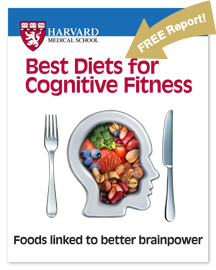Practical pointers for pickleballers
This popular sport can be a great way to keep your heart healthy. But take steps to avoid pickleball-related injuries, which are more common in people over 50.
- Reviewed by Christopher P. Cannon, MD, Editor in Chief, Harvard Heart Letter; Editorial Advisory Board Member, Harvard Health Publishing

If you've joined the ranks of pickleball enthusiasts and play on a regular basis, congratulations. If you haven't, consider giving it a whack. Research shows that this paddle sport-often described as a hybrid of tennis, badminton, and Ping-Pong-can boost cardiovascular health (see "Heart perks for pickleball players").
But as pickleball's popularity continues to soar among seniors, so have injuries related to the sport. "Pickleball is certainly a common source of injury among the patients I see," says Daniel Orr, a physical therapist at Harvard-affiliated Spaulding Rehabilitation Hospital. According to a 2023 review in the journal Cureus, pickleball-related injuries increase with age and include strains, sprains, joint pain, falls, and fractures.
Heart perks for pickleball playersPlaying pickleball — which counts as moderate-intensity exercise — confers exercise-related changes linked to cardiovascular benefits, according to a 2024 review article in the Journal of Physical Activity and Health. Here are some highlights from various studies: Elevated heart rates. On game days, players averaged over 86 minutes in increased heart rate zones, almost half of which was in what's called the cardio zone (70% to 85% of maximum heart rate), which boosts fitness and helps burn fat. Increased step counts. Players took an average of 3,000 extra steps per day on the days they played pickleball. Lower blood pressure and cholesterol. Overweight older adults who played pickleball for an hour, three times a week, for six weeks lowered their systolic blood pressure (the first number in a reading) by an average of nearly five points and their diastolic blood pressure (the second number) by two-and-a-half points. They also cut their harmful LDL cholesterol by nearly four points. |
Possible risks
Although pickleball is sometimes described as a low-impact cardiovascular workout, that's not always accurate. The sport-especially fast-paced games-can be jarring to the joints and muscles because it requires agility and quick movements in different directions, says Orr. These actions can be challenging even for people who do regular moderate-intensity exercise such as brisk walking. And when older, previously sedentary folks start playing, they can be particularly prone to slips, trips, and falls during the game, according to the review. Most pickleball-related injuries occur in people ages 50 and older, with men suffering more sprains and strains and women more fractures.
"Most of the chronic overuse injuries I see in pickleball players are in the lower body, especially the hips, knees, and ankles," says Orr. Large strides and abrupt moves can strain muscles in the thighs. Sudden starts and stops and side-to-side moves increase stress on joints, muscles, and ligaments in the hips, knees, and ankles. Quick directional changes and pivoting may cause tiny tears in the Achilles tendon, the band of tissue that connects the calf muscle to the heel bone.
Preventive strategies
Several strategies may help you prevent injuries.
Take a class. Instructors can demonstrate proper form (like proper paddle-holding technique) and drills to enhance skills and agility. Many YMCAs and senior centers offer classes, or you can look online for videos and tips.
Choose the right support. Wear well-fitting athletic shoes with a roomy toe box that has a little space for your toes to slide forward a bit during running. If you're prone to twisting your ankle, choose a shoe with more ankle support. Some people find that sleeve braces (which are made of stretchy, compressive fabric that you pull or wrap around a joint) can provide added support for a wrist, knee, or ankle that feels a bit tender.
Warm up. Before you start to play, spend a few minutes doing squats, forward lunges, side lunges, and arm circles to help loosen up your joints and increase blood flow to your muscles. This also helps prepare your body for explosive movements on the court. "You might also ask your fellow players to consider the first game as a warm-up session and keep the competitive fire down for the first 10 minutes or so," says Orr.
Build lower-body strength. Off the court, do strength-building exercises like squats, lunges, and heel raises, which target all the major muscle groups in the legs. Aim for 10- to 15-minute sessions a couple of times a week.
Image: © Visual Art Agency/Getty Images
About the Author

Julie Corliss, Executive Editor, Harvard Heart Letter
About the Reviewer

Christopher P. Cannon, MD, Editor in Chief, Harvard Heart Letter; Editorial Advisory Board Member, Harvard Health Publishing
Disclaimer:
As a service to our readers, Harvard Health Publishing provides access to our library of archived content. Please note the date of last review or update on all articles.
No content on this site, regardless of date, should ever be used as a substitute for direct medical advice from your doctor or other qualified clinician.
















